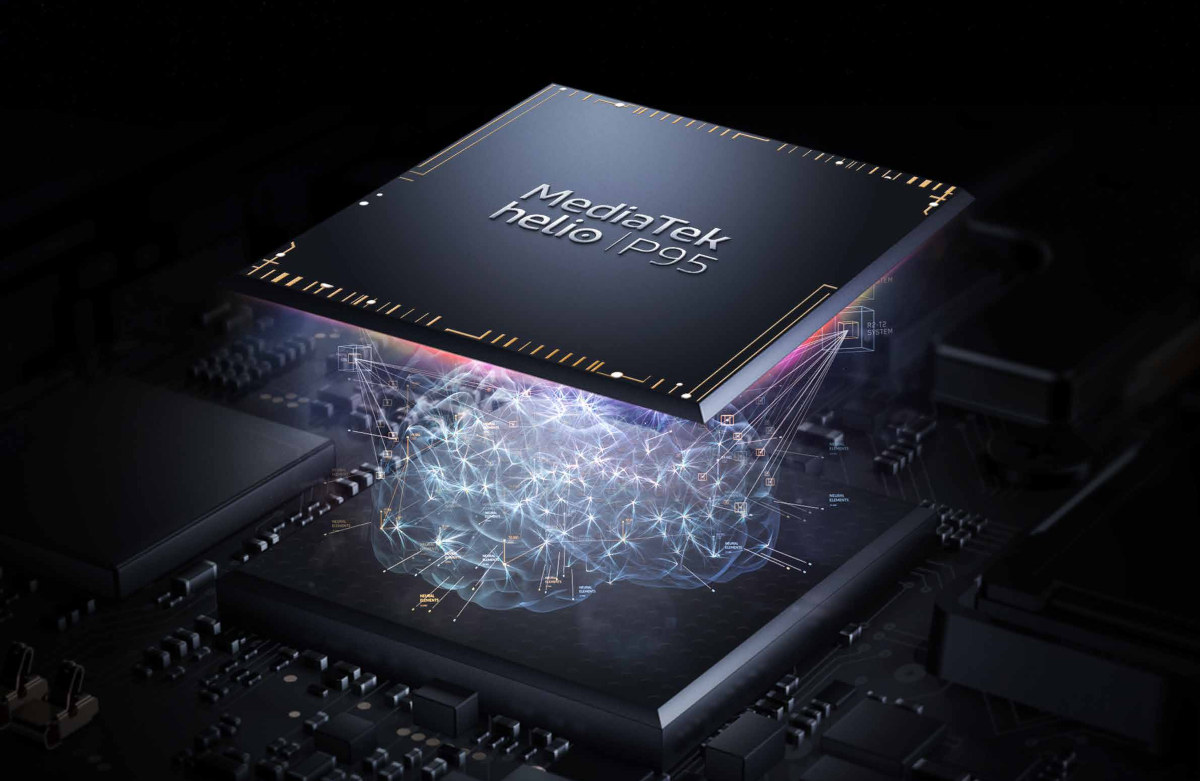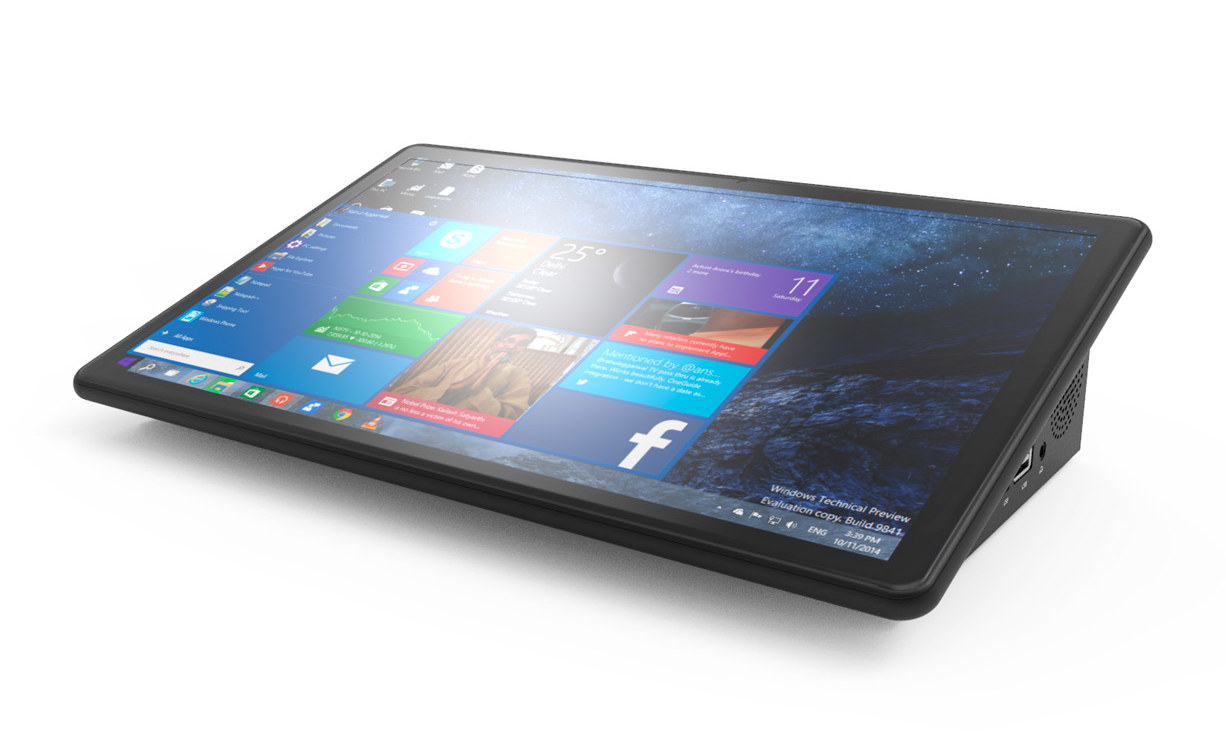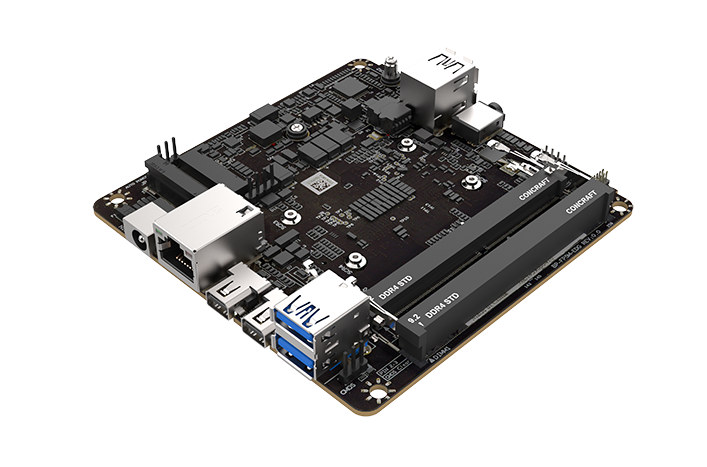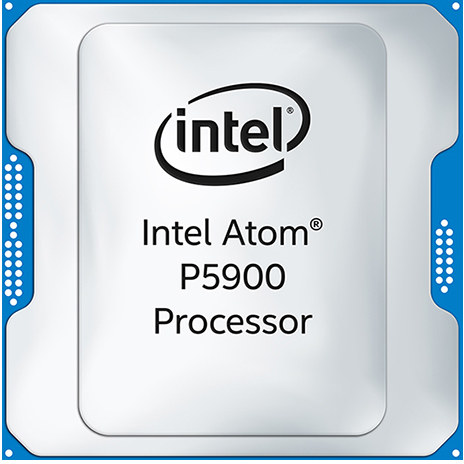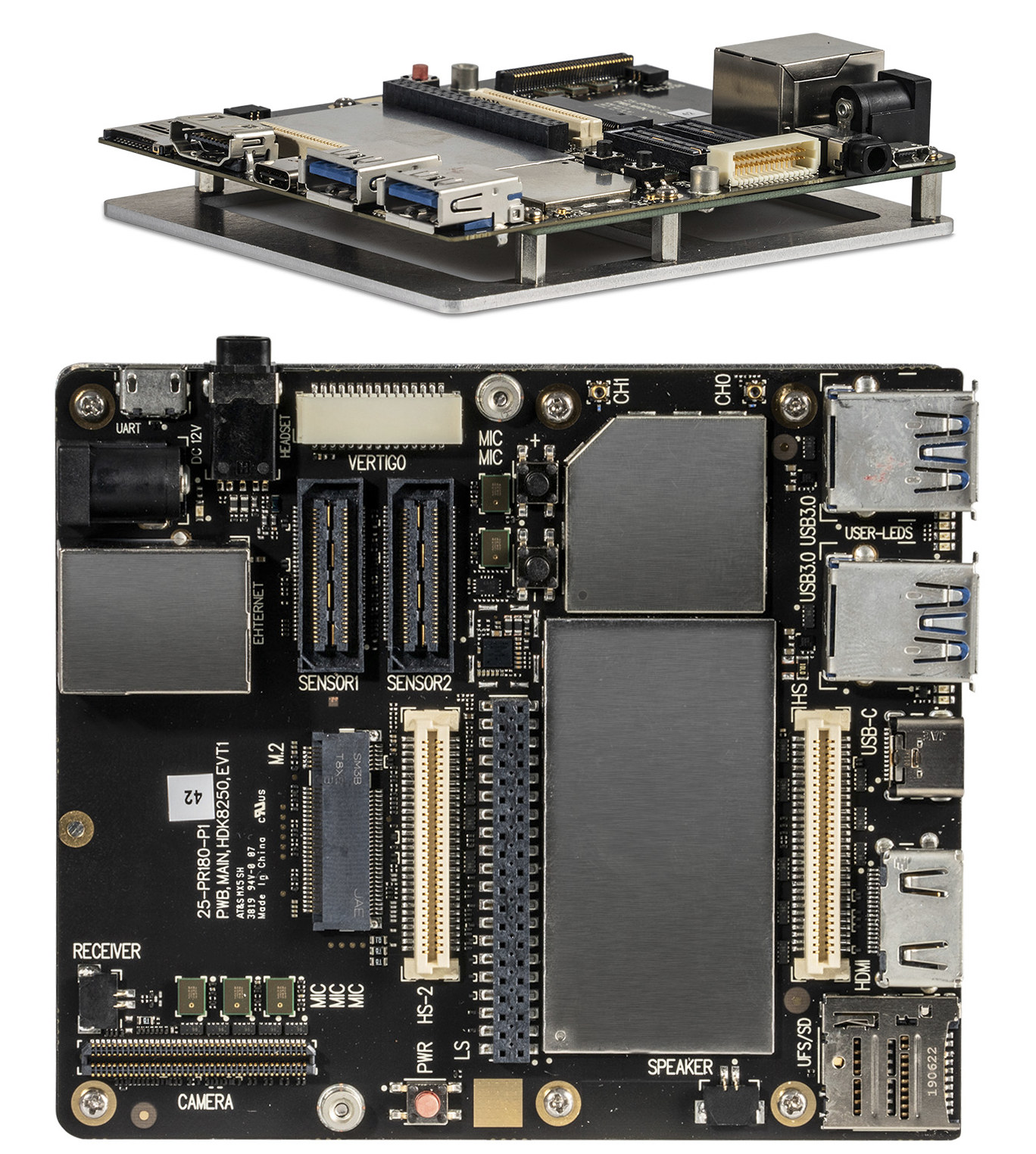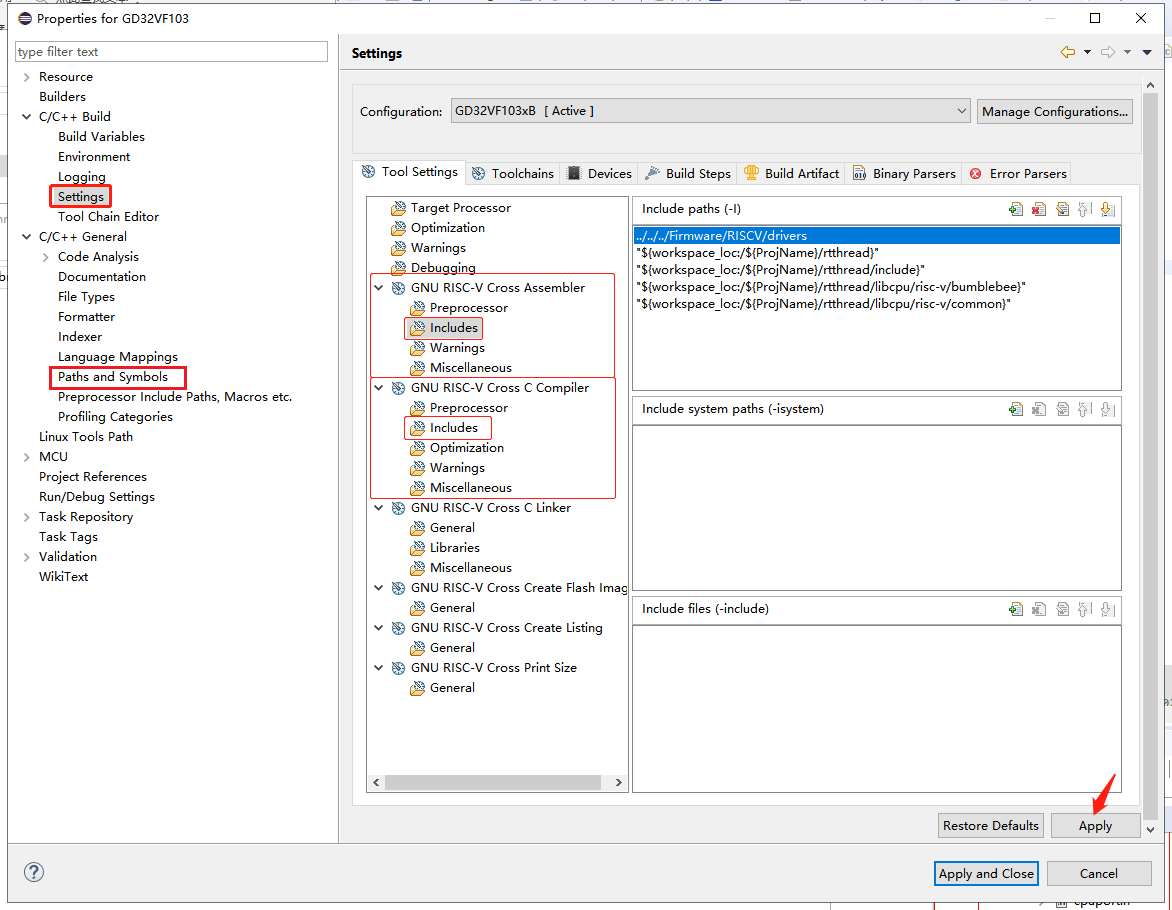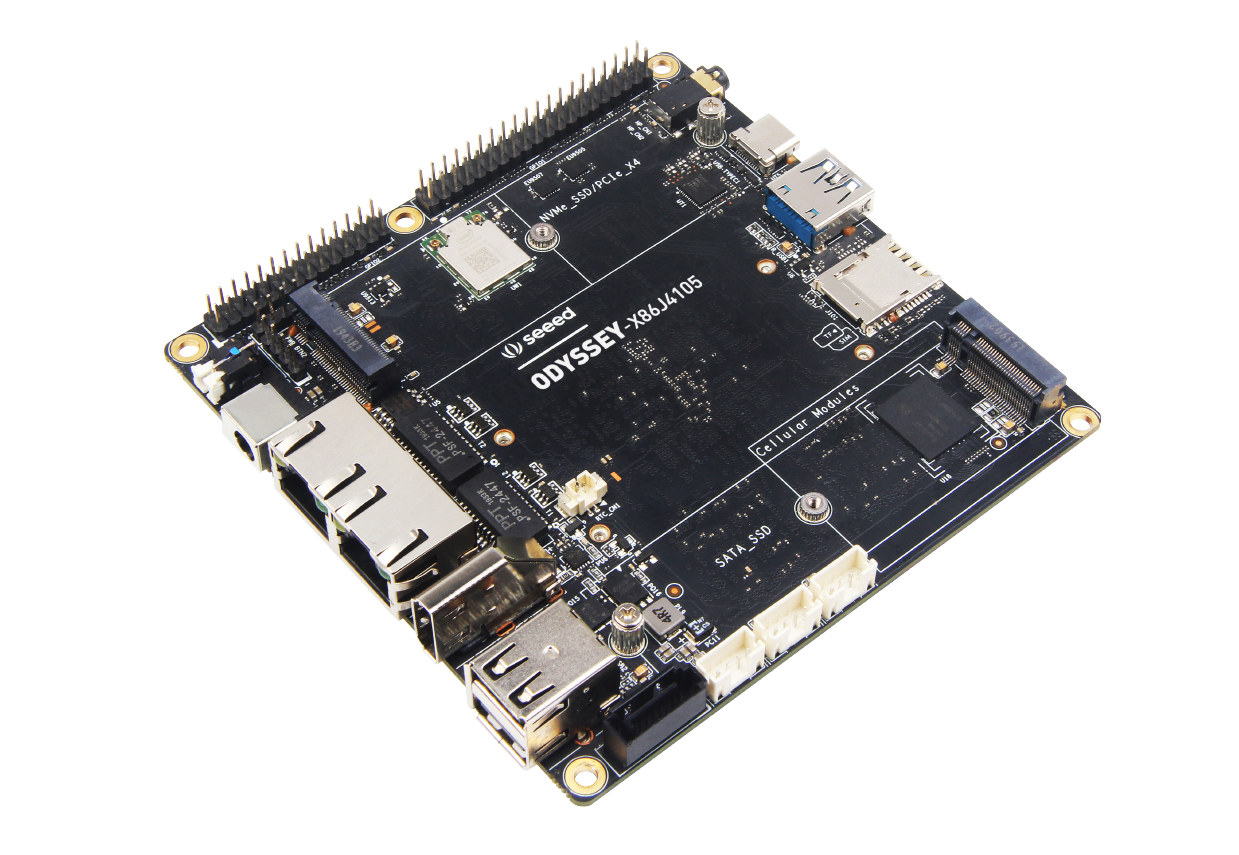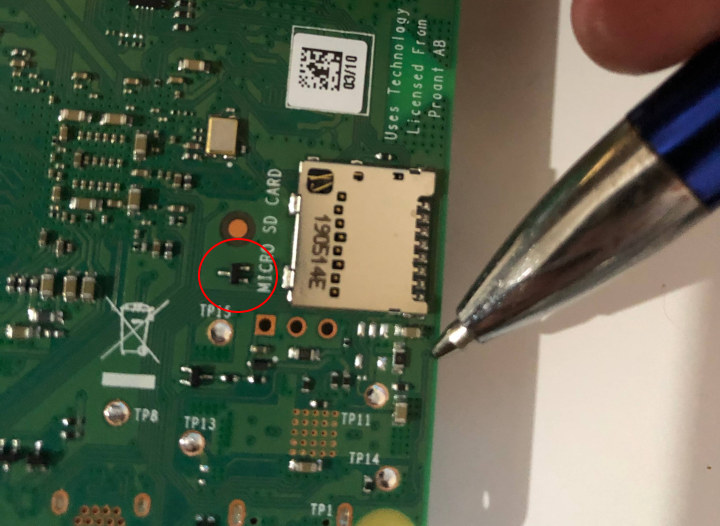MediaTek has just unveiled an upgrade to its Helio P90 processor. MediaTek Helio P95 still features the same APU 2.0 engine for AI accelerator but with a 10% performance improvement based on ETH Zurich benchmark, and the PowerVR GM 9446 GPU clock has been increased as well to deliver a 10% graphics performance boost. The company also claims a “60% shorter GPU rendering-to-display pipeline”, but it’s unclear whether the comparison is against the P90 processor or other “typical” Arm processors. MediaTek Helio P95 key features and specifications: CPU – 2x Arm Cortex-A75 processors @ 2.2GHz and 6x Arm Cortex-A55 processors @ 2.0GHz using DynamIQ technology GPU – Imagination PowerVR GM 9446 GPU NPU – MediaTek APU 2.0 fusion AI architecture with 1127 GMACs MediaTek CorePilot for sustainable peak performance, longer battery life, and lower operating temperature System Memory – Up to 8GB of dual-channel LPDDR4x memory @ 1866 MHz Storage […]
HiGole F11APL Apollo Lake Industrial Mini PC Comes with a 11.6″ Touchscreen Display
We’ve previously reviewed a few unusual mini PCs and tablets from Shenzhen Qianhai Gole Technology Co., Ltd – better known as just GOLE – such as GOLE F7 rugged tablet very recently, and before that some mini PCs with built-in display as GOLE 10. The company has now come up with an update to the latter with a more powerful Apollo Lake processor. HiGole F11APL comes with a slightly larger 11.6″ touchscreen display, but the Intel Celeron N3450 processor combined with 4GB RAM and 64GB eMMC flash storage will provide much better performance than the previous Cherry Trail-based solution. HiGole F11APL specifications: SoC – Intel Celeron N3450 quad-core Apollo Lake processor @ 1.1 GHz / 2.2 GHz (Burst frequency) and 12 EU Intel HD Graphics 500 @ 200 MHz / 700 MHz (Burst freq.); 6W TDP System Memory – 4GB LPDDR4 Storage – 64 GB eMMC flash, micro SD slot […]
AMD Goes Low Power with 6W Ryzen Embedded R1102G & 10W Ryzen Embedded R1305G Processors
If you’d like a relatively low cost (~$200) mini PC featuring a recent processor with a TDP less than 10W your only options up to this point were models with Intel Cherry Trail, Apollo Lake or Gemini Lake processors. AMD launched some 12W-25W processors with Ryzen Embedded V1000 series and Ryzen Embedded R1000 series for embedded systems over the course of the last two years. But the company is now providing lower cost and lower power versions of their Embedded R1000 family with Ryzen Embedded R1102G and Ryzen Embedded R1305G processors with a TDP of respectively 6W and 10W. Ryzen Embedded R1102G & R1305G Key Specs The new processors have many the same features as the previous R1505G & R1606G models but at a lower TDP and performance (frequencies): Ryzen Embedded R1102G – 2-core/2-thread @ 1.2 GHz / 2.6 GHz (Turbo); 3x CU Radeon Vega 3 graphics cores @ 1.0 […]
Intel Atom P5900 “Snow Ridge” Processor to Power 5G Base Stations
Intel may have given up on developing 5G modems for mobile devices, but the company will still be participating in the ramping up of 5G technology by focusing on 5G infrastructure instead. So the company has just introduced the Atom P5900 “Snow Rigde” processor family designed for 5G wireless base stations requiring “high throughput, low latency processing for high-density network edge and security solutions”. The 10nm chips are offered with 8 to 24 cores based on the Tremont micro-architecture. There are four Atom P5900 “Snow Ridge” processors so far: Intel Atom P5921B 8-core processor @ 2.20 GHz with 9MB cache Intel Atom P5931B 12-core processor @ 2.20 GHz with 13.5MB cache Intel Atom P5942B 16-core processor @ 2.20 GHz with 18MB cache Intel Atom P5962B 24-core processor @ 2.20 GHz with 27MB cache P5912B supports up to 64GB ECC DDR4 memory, and other parts can handle up to 128GB RAM. […]
Lantronix Snapdragon 865 Development Kit to Support Android 11
If you ever wanted to develop applications for the latest Qualcomm Snapdragon processor, Intrinsyc is always the first company to provide Snapdragon hardware development kits and we’ve covered many over the years including Open-Q 845 HDK and Open-Q 855 HDK. The company has recently been bought by Lantronix, a provider of solutions for the Internet of Things (IoT) and Out of Band Management (OOBM), and we covered one of their products – an RJ45 connector running Linux – over 6 years ago. Lantronix Snapdragon 865 Mobile Hardware Development Kit is the first devkit announced since the acquisition. The board is powered by the latest Snapdragon 865 (SM8250) processor combined with 6GB LPDDR5 RAM, 128GB UFS 3.0 storage. The development kit currently supports Android 10, but it will be one of the first hardware to officially run Android 11 just previewed by Google. Snapdragon 865 Mobile HDK specifications: SoC – Qualcomm […]
Getting Started with RT-Thread Nano RTOS on RISC-V Processors
CNXSoft: This is a guest post by RT-Thread explaining how to create your first program running on their real-time operating system using a GD32V RISC-V MCU board as an example. This article describes how to “port” RT-Thread Nano to the RISC-V architecture, using the Eclipse IDE, GCC toolchain, and a basic project for the Gigadevice GD32V103 MCU. Foreword RT-Thread is an open-source embedded real-time operating system. RT-Thread has a standard version and a Nano version. The standard version consists of a kernel layer, components and service layer, and IoT framework layer, while the Nano version has a very small footprint and refined hard real-time kernel, better suited to resource-constrained microcontroller units (MCU). The main steps for porting Nano are as follows: Prepare a basic Eclipse project and get the RT-Thread Nano source code. Add the RT-Thread Nano source code to the base project and add the corresponding header path. Modify […]
ODYSSEY-X86J4105800 SBC Combines Intel Gemini Lake SoC and Arduino Compatible MCU
Would it be good to have an all-in-one Windows platform used to both develop Arduino code and run that code to control I/O of your project? Or alternatively, have a single board computer capable of video processing and real-time I/Os? That platform already exists. UDOO X86 II SBC features an Intel Braswell processor combined with an Arduino Leonardo compatible Microchip ATmega32U4 MCU. But there’s now another, more powerful option courtesy of Seeed Studio with the oddly named ODYSSEY-X86J4105800 SBC equipped with an Intel Celeron J4105 quad-core Gemini Lake processor to run Windows 10 or Linux distributions, and a Microchip SAMD21 ARM Cortex-M0+ microcontroller compatible with Arduino Zero. ODYSSEY-X86J4105800 SBC specifications: SoC – Intel Celeron J4105 quad-core processor @ 1.5/2.5 GHz (Turbo) with 12EU Intel UHD Graphics 600 @ 250-750 MHz; 10W TDP System Memory – 8GB LPDDR4 RAM Storage Optional 64GB eMMC flash (fitted to ODYSSEY-X86J4105864 model), 1x SATA III data […]
Raspberry Pi 4 Rev 1.2 Fixes USB-C Power Issues, Improves SD Card Resilience
The first Raspberry Pi 4 boards suffered from a poor USB-C power supply compatibility due to issues for the power circuitry. That means if you bought the official USB-C power supply you had no issues, but if you wanted to re-use a spare USB-C power supply or incompatible cable, you may be out of luck. The Register is now reporting that the Raspberry Pi Foundation has discreetly released a new revision (v1.2) of the board that fixes several issues including USB-C PD compatibility, and as Eben Upton explains the new revision also: moved the WLCSP SD card voltage switch to the top side … silk screen tweaks to reduce solder bridging in manufacture”. The new boards have been around for a couple of months as some users report the USB-C power issues have been fixed on new boards. Spotting Differences in the new Raspberry Pi 4 Rev 1.2 Board? The […]

